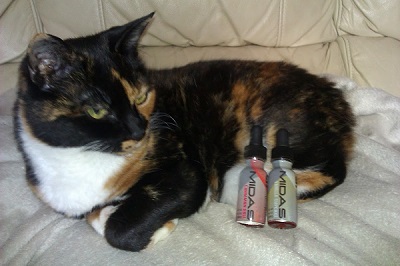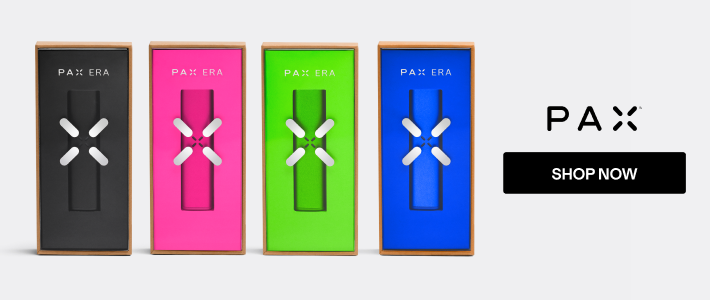 Although propylene glycol (PG) is generally recognized as safe for humans and most pets, cats actually have a unique sensitivity to the chemical.
Although propylene glycol (PG) is generally recognized as safe for humans and most pets, cats actually have a unique sensitivity to the chemical.
This may cause concern for some vapers, since the majority of e-liquids are primarily composed of PG. Upon learning this, it’s only natural to wonder if it would be better to switch to vegetable glycerin (VG) based liquids, or simply not to vape near your cat, but after finding out more about the issue, you can see that PG exposure from second-hand vaping is unlikely to cause an issue.
Why Propylene Glycol is Bad for Cats
It’s now well established that PG isn’t good for cats, and this is because of its effect on the red blood cells: it increases the quantities of “Heinz bodies” among them. These are basically lumps of hemoglobin that have been “denatured,” meaning that they’ve lost their ordinary structure and therefore aren’t as good at carrying oxygen. This occurs due to the action of “free radicals” (reactive, oxygen-containing chemicals), and the process isn’t restricted to cats. Generally speaking, the animal’s spleen either repairs the damage or gets rid of the blood cell, but if a large amount of blood cells are culled due to Heinz bodies, it leads to anemia (which can be basically defined as a low blood cell count). PG isn’t directly responsible for this oxidative damage in cats, but it’s assumed that the intermediary molecules when it’s broken down in the body are.
In cats, there is also a specific weakness to Heinz bodies because they form them more readily than other animals and their spleen is also pretty ineffective at removing them. Even in healthy cats, approximately 1 to 2 percent of red blood cells will have Heinz bodies, but their increased risk means that it should be minimized as much as possible.
PG was used as a preservative and a (cheap) source of carbohydrates in cat food until 1992, and although it’s still used in foods for all other animals (and ours), the FDA officially declared it unsafe for cats in 1996. Onions also cause Heinz bodies in cats, which is why they should also stay off the menu.
Should I Worry About Using an E-Cig Around My Cat?
The fact that the issue was detected because PG was put in cats’ food until the 90s should immediately allay some fears. Research has shown that the effect is dose-dependent: in testing, five weeks of feeding cats PG in ordinary cat-food like quantities (1.6 g per kg in body weight) increased the percentage of Heinz bodies to 28, and after three weeks eating higher quantities (8 g per kg) it went up to 92 percent.
For an ordinary cat (weighing around 4 kg), the lower dose used in the study would be 6.4 grams (or around 12 percent of their diet), which is a hell of a lot in comparison to the amounts you could realistically expect a cat to inhale by being in the room with somebody who’s vaping. If you’re mixing e-liquid and allow your cat to literally drink or roll around in your PG (which would require so many omissions of common sense it’s hard to even comprehend), then obviously there would be some cause for concern, but if you’re just using an e-cig there’s very little to worry about.
The best advice is to just exercise some caution about where you blow the vapor, as in, don’t blow it directly into your cat’s face (even if it’s funny), and don’t vape all over their food or water. The aim of the game is to minimize your cat’s exposure, but as long as you avoid these more obvious forms of exposure vaporized PG isn’t anything to be concerned about. Vapers who’ve asked vets whether PG from vaping is anything to worry about have received this same response.
Conclusion – Keep an Eye Out for Symptoms
Although it’s highly unlikely to occur, it’s still worth looking out for the symptoms of Heinz body anemia in cats anyway. These include skin discoloration, fever, loss of appetite, weakness (which develops quickly), pale lips, mouth and gums, and – in serious cases – rust-colored, red-brown urine. Even if it isn’t anemia or PG-related, it’s obviously still worth going to the vet if you cat has some of these symptoms, because they’re likely to be indicative of some problem. Due to the concentrations involved, there’s little risk of Heinz body anemia unless you constantly direct your vapor towards your cat – or happen to buy your cat food from the 1980s – but it’s worth being cautious anyway.

